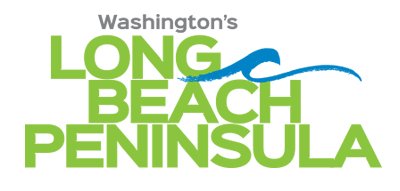Washington Department of Fish and Wildlife (WDFW) sets Ocean Sport Clamming Seasons.
Tentative Dates & Tides:
Dates will be confirmed by safety tests just prior to the digs. Watch our blog, or WDFW’s press release page for confirmation announcements. This information is courtesy of WDFW:
Licensing:
All persons 15 or older must have their current shellfish/seaweed license while harvesting clams. Licenses may be purchased online, by telephone (1-866-246-9453) or in person at more than 600 license vendors throughout the state. Search for vendors here.
Recreational digging for razor clams is truly a family sport. It can be enjoyed by children and senior citizens alike. All you need is a clam shovel or specialized tube, a container to put your clams in and most important, your clam license. Be sure to check with WDFW for the latest regulation requirements for clam digging. During the fall and winter when low tides occur at night, thousands of clam diggers brave the elements to dig by lantern or flash light. Because there is a great deal of interest in digging at all times of the year, seasons are set to allow digging during daylight spring tides when there is better weather and during the fall/winter when diggers have to deal with the elements, but not as many clam diggers.
In Washington waters, the Pacific razor clam (Siliqua patula) grows to a maximum length of six inches, although clams 3 to 5 inches in length are most often harvested. Clams seven inches long have been recorded, but are very rare. The life expectancy for Washington clams is five years.
SEASON:
Ocean Sport Razor Clam Season on the Long Beach Peninsula typically opens for a few days each month October through April. The season is set based upon the number of clams available and is dependent upon marine toxin levels (commonly known as “red tide”) staying within safe boundaries.
LIMIT:
The first 15 clams dug, regardless of size or condition. Each person must carry their own catch container but may share digging tools.
HOW TO DIG:
First look for a “clam show”. What is a clam show? That’s where a clam has withdrawn its neck or started to dig, leaving a hole or dimple in the sand. There are three major kinds of “shows” to look for:
1. Dimple: a depression in the sand
2. Doughnut: depression which has raised sides
3. Keyhole: this is usually in drier sand areas and is shaped like an “hour-glass” or is a hole with very distinct sides.
Always look for the larger-sized holes about the size of a quarter. This is a good indication that the clam will be larger, but not always. Clams will also show at the edge of the surf line when you pound the beach with a shovel handle or your foot. They may squirt sand and water out of the hole where they are located. You need to be quick when digging in the surf as razor clams dig quite fast in the soft fluid sand.
How to Dig With a Clam Shovel
1. Place the shovel blade 4 to 6 inches seaward of the clam show. The handle of the shovel should be pointed toward the sand dunes. 2. Use your body weight to push the shovel blade straight into the sand while you drop to one knee. In hard sand, gently rock the shovel handle from side to side for ease of entry. It is very important to keep the blade as vertical as possible to keep it from breaking the clam shell.
3. Pull the handle back just enough to break the suction in the sand, still keeping the blade as straight as possible. The sand will crack as shown.
4. Remove sand by lifting the shovel upward and forward. Repeat this 2 to 3 times.
5. Succeeding scoops of sand expose the clam enough to reach down with your hand and grasp its shell. Razor clams move rapidly downward but not horizontally.
How to Use the “Clam Tube” (aka “Clam Gun”)
1. Facing the ocean, check impression of tube in sand, then center the tube over the” clam show.”
2. Slant the top of the tube slightly toward the sand dunes. Work the tube in carefully with a rocking or twisting motion.
3. Work the tube down 6″ to 10″ below the surface. Place thumb over air vent, pull up using your leg muscles (keeping your back straight will avoid muscle strain!). Do this one to three times.
4. Check each core that you bring up. The clam may be concealed within. If the clam does not come up with the tube, reach into the hole for it. Remember to keep the first 20 clams and avoid wasting any.
For the most current information on clamming, including dig dates (and how they are set), licensing regulations, how to dig ’em, clean ’em and cook ’em–anything you ever wanted to know about clamming on our beach–and more…Visit the Washington State Department of Fish and Wildlife’s web pages on razor clams. Close the window to return to this page.
Much of this page is a reproduction of a Washington Department of Fish and Wildlife document and is not the official document or regulations of the Washington Department of Fish and wildlife. The accuracy of the reproduction cannot be guaranteed by WDFW.
